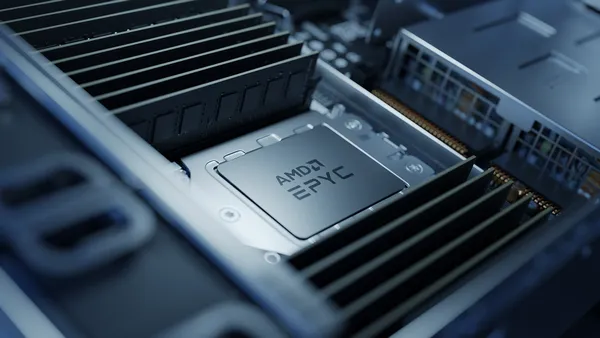Why EPYC CPUs are essential for your IT strategy

Knowledge blog
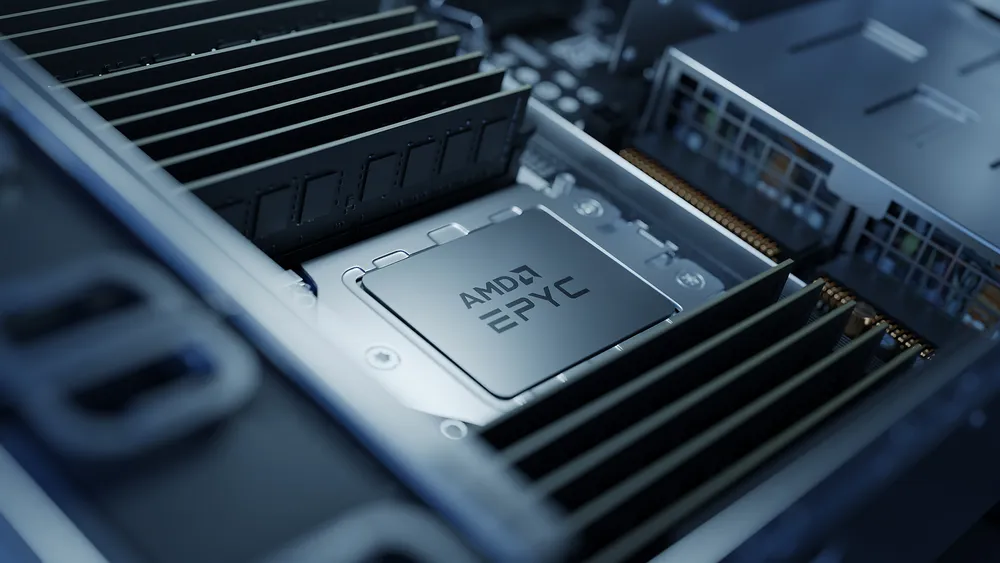
Across the entire IT industry there is one question that keeps coming back. Whether you are a system integrator for a small business or a chief technology officer at an enterprise organization. How can you constantly improve upon your infrastructure? Before you try to formulate a strategy oriented or ambiguous answer in your head, think about the following. Why not look at the basis of all computing? The CPU. Simply put, if you can choose a processor with improved and optimized processing nodes it improves your whole IT infrastructure.
The reasons why IT Infrastructures worldwide are slotting AMD as part of their infrastructure
Yes, it might seem like a simple suggestion but after reading this article we’re sure you’ll have exactly the right arguments and reasons to improve the backbone of your infrastructure. And suddenly the choice of CPU won’t seem so negligible or straightforward anymore.
Breaking benchmarks worldwide
The AMD EPYC™ range already bagged over 250 world records in multiple benchmark results. An impressive track record for a processor line that has been introduced only five years ago. Especially in comparison to the fact that Intel’s Xeon brand has been on the market since ’98. But there is more. If we analyze AMD sales figures, they reported an increase of 83% in their data center segment in Q2 of 2022, which AMD EPYC™ plays a major role. Subsequently in Q3 of the same year they reported that their data center segment revenue was $1.6 billion, up from 45% year-over-year. Again, driven by strong sales of EPYC™ server processors.
But what makes this processor a much better choice? The short answer is that you get much more performance per-core. But ultimately this boils down to how AMD handles the granular semiconductor manufacturing process, by thoroughly perfecting it. A larger core count, more overall PCIe lanes, and a larger L3 cache. Resulting in much better throughput and faster access to your data. But if the specifications on work well on paper, would that translate to practical solutions? Let’s investigate the vastly different IT industries and look at some real-world examples.
So how does this improve your organization?
An IT infrastructure can be setup in so many numbers of ways, the end-result will most likely be unique. Since building your infrastructure effectively usually requires a high level of understanding the abstraction between all used systems. Since every organization has a different rhythm to which it moves their business, it logically has their own way of setting up their infrastructure. Now that we’ve established that the right choice of processor makes a difference, in what cases does it affect you? Whether you have or rent a small server room filled with dedicated servers or make use of a cloud service provider. There is always a better choice to be made.
We’ll have a look at various technology industries and reflect on what aspects of the AMD chip makes the difference.
Examples of industries that utilize AMD EPYC™ as part of their business
- Cloud Computing
- Hyperconverged Infrastructures
- Data & Analytics
- Network & Telecommunications
- Design and Media
For cloud industries the major upside seems to be the fact that when you migrate your virtual machines it will still be able to function due industry standard x86 instruction set. Simply put, a straightforward migration process for something that is quite often perceived as a painful process. Moreover, bigger cloud providers like Microsoft Azure and AWS are actively introducing newer instances that are AMD-powered. Other industries benefit more from the general availability of specific software support. For example, in the endeavor of streamlining your infrastructure as HCI it can be helpful to find out that VMware and Nutanix are specifically optimized for this use. In the case of analytics and databases compatibility with for example IBM DB2, Maria DB, and Microsoft SQL Server is assured.
However, most advantages are applicable industry wide. Faster results while protecting your data with built-in security functionalities like AMD Infinity Guard. One of the features within AMD Infinity Guard is SEV-SNP that is more applicable to cloud-based workloads by helping to isolate virtual machines. Let’s list a few of these general advantages below.
- Energy efficiency, which makes AMD EPYC™ a greener choice.
- AMD Infinity Guard, this integrated set of security features helps any industry.
- Lower total cost of ownership.
- Scalable for future infrastructure demands.
But how do industries utilize AMD EPYC™ as part of their strategy?
If the advantages in the previous section didn’t convince you yet, perhaps these real-world cases will provide more perspective.
Netflix switched to using the 2nd generation AMD EPYC™ processor (codenamed Rome) somewhere in ‘21. The server in question assisted in their mission to push 400 Gbit/s of TLS-encrypted video via a single server, up from their current 200 Gbit/s. That’s a lot of bandwidth going through one server. If we are talking performance, EPYC™ CPUs are an outstanding choice as well. In fact, the processor was used to build a custom supercomputer for Meta. While having an AI supercomputer with an expected 5 exaFLOPS, consisting of 4,000 AMD EPYC™ Rome processors, might be out of reach for most organizations, it does speak volumes for what EPYC™ is capable of.
But not everyone is solely interested in bandwidth or performance gains. There are examples of how using EPYC™ contributed to reducing overhead. If we look at Nokia, they specifically focused on lowering their power consumption, which they did with around 40%. For those looking at lowering their total cost of ownership, or to put it bluntly cutting costs, might be interested how Chinese automobile manufacturing company Nio was able to reduce this figure. By adding AMD EPYC™ in the mix with their HPC platform, their TCO reduced over 50%.
And even in specific uses AMD CPUs prove their weight in gold. Let’s Encrypt, an authority run by Internet Security Research Group. They make use of certificate authority software that checks a single database to minimize complexity. However, due to the fact that they have to query this singular database, they needed a very powerful machine. Which you’ve already guessed they found in the form of our main subject. And in the process they lowered the latency to query the database from 0.45ms to 0.15ms. It seems that the general upside, performance increase, applies to almost anything.
EPYC™ is for the data centers
While RYZEN is excelling in the space of desktop computers and smaller workstations, EPYC™ is specifically designed for the data center market. And in both cases the term performance usually begins or ends the conversation.
In this article we’ve discussed the upsides on paper, like the overall increase in performance and energy-efficiency. Then, we reflected on the industries that use this scalable brand. Cloud computing, databases, analytics, virtualization… you name it. These upsides make it so that both small (Let’s Encrypt) and large companies (Netflix) are starting to implement AMD EPYC servers as part of their IT strategy.
Let’s be honest, choosing a CPU isn’t exactly controversial, but the results will be. To effectively take points from this article make sure to compare against your typical workload and use case. Getting a general idea of how EPYC™ improves your business, can be distilled from examples in the previous sections. Align that with your own experiences. While the AMD processor can prove a significant boost for another company, that doesn’t mean it’ll hold true in your situation. In some respects, compatibility plays a part. Which isn’t surprising if we look at the server market, Intel still holds around 88.4% (end of 2021). Note that it has only been five years ago when EPYC™ launched, when the same figure was about 98%. Just to give you some food for thought. So do a deep dive in the benchmark results listed on their records website, compare business cases, and weigh them against your own findings.
More about Worldstream
At Worldstream, we believe it’s especially important for customers to maintain full control over their data. Worldstream’s services are focused on providing customized advice to find out which components are required to achieve the goals of organizations. After all, every organization is unique and has different needs. For example, we offer private cloud, but it is also possible to set up your own cloud service with a cluster of AMD dedicated servers and a matching IT solution. You can subsequently add a hypervisor (such as Openstack or Proxmox) to add a virtualization layer. Which you can then scale up with ease, both horizontally and vertically. So that you can continue both the expansion of resources and the continuous demand for growth.
As an IaaS provider, Worldstream has as many as 12 IT solutions and offers dedicated servers in two flavors: fully customizable and fixed instant delivery configurations. Currently its own state-of-the-art data centers houses more than 15,000 dedicated servers in Naaldwijk. Worldstream has a worldwide network with an utilization rate of 45%. Of this capacity, the maximum network usage is only 45 percent, to provide customers with optimal scalability and anti-DDoS protection for their IT infrastructures.
We have 15 years of knowledge and experience with data centers, servers, and network management. The result is more than 15,000 dedicated servers spread across two in-house data centers through sister company Greenhouse Datacenters. In addition, Worldstream uses locations in Frankfurt and Amsterdam. High-quality IT infrastructure that is both flexible and affordable. Emphasized by the sky-high Net Promoter Score of 74 (NPS/US) and satisfaction rating of no less than 9.6.
Curious about the AMD dedicated servers offered by Worldstream IT Infrastructures? Discover a bit more about AMD EPYC™ right here.
You might also like:
- IaaS and the rise of As-a-Service.
- How Public Cloud On-Ramps are the key to success.
- Why Dedicated Servers are still relevant in six reasons.
Have a question for the editor of this article? You can reach us here.

Latest blogs
CPU Steal Time on a VPS: How to Spot Contention and Decide on Dedicated
Knowledge blog
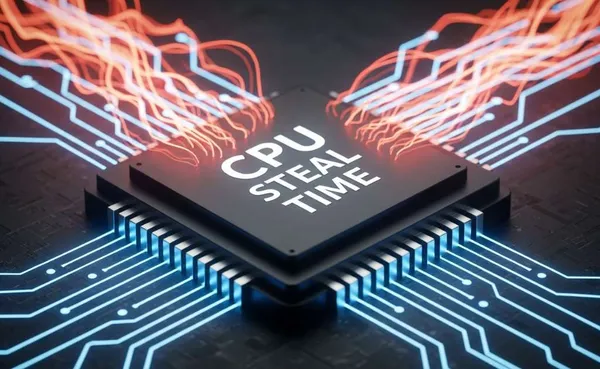
The Ultimate Gaming Latency Guide: How to Eliminate Lag and Maximize FPS
Knowledge blog

Growing smarter with less maintenance

Knowledge blog

Worldstream and Nokia Join Forces for Next-Gen DDoS Protection

News
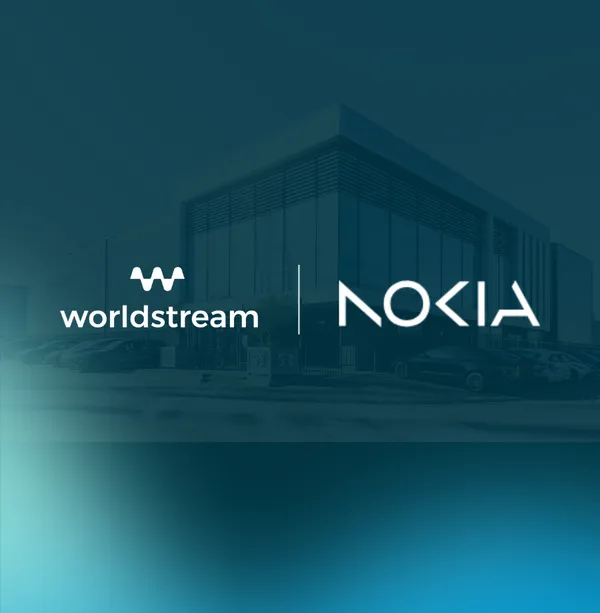
Worldstream unveils new positioning and offers customers more control over their digital infrastructure

News
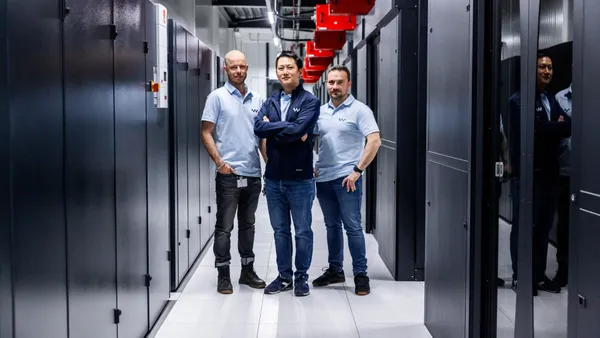
5th Gen AMD EPYC 9355P – Now Live at Worldstream

News
